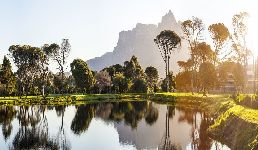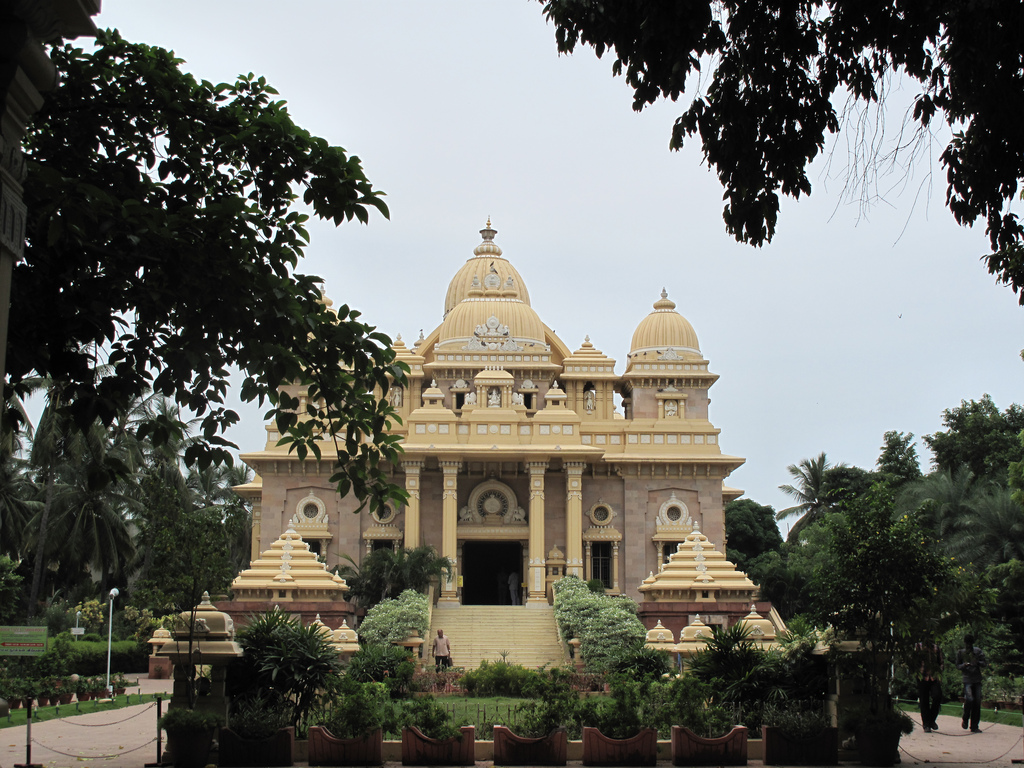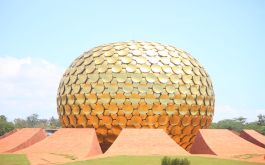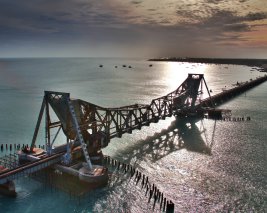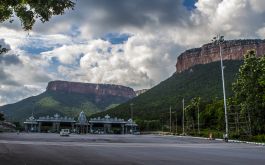Temples, Tales and Tamil – Madurai
Silent walls stand witness to the past. These roads have seen many a traveller – from shores as far as Rome. The buildings breathe with the melodious consonants of Tamil. The graceful shapes of the Meenakshi Temple soar into the sky. Here, the fluffy idlis rival the clouds. Here, is where scholars and poets left their mark. Here is where the land meets the river. Here is where Shiva shook his matted locks, letting loose a sweet nectar (Madhura) for which the city is named.
This is Madurai – mellifluous and majestic.
| Madurai: A Quick View of the state |
| State |
Tamil Nadu |
| Official Language |
Tamil and English |
| Dial Code |
452 |
| Population |
3.188 million |
| Currency |
Indian Rupee (INR) |
| Time Zone |
UTC+05:30 (IST) |
| Area |
147.97 square kilometers |
Highlights: A Treasure of Temples
Places of worship: At the epicentre of Madurai – its personal crown jewel – lies the majestic Sree Meenakshi Amman temple. Dedicated to Lord Shiva, and named after his consort Parvati, this temple extends beyond 6 hectares of land. Wander through the 1000 pillar hall and marvel over the statues and architectural brilliance of this sacred shrine. If you’re following the spiritual trail in Madurai, then it doesn’t end at the Meenakshi temple. You can also visit Thirupparankundram Murugan Temple, Koodal Azhagar Temple, Pazhamudhir Solai Temple and more.
Explore and shop: Once you have finished the temple tour, turn your eyes towards the other treats that Madurai has to offer. Visit the lovely Gandhi Museum - a serene, white building which houses several iconic belongings of the Father of the Nation. Walk the path of Kings when you enter the Thirumalai Nayakar Mahal – a palace constructed in the 17th century, in a beautiful mix of Dravidian and Rajput architectural styles. If it’s shopping you want, then it’s shopping you get at South Masi Street. Pick up vibrant tie and dyed cotton Sugundi sarees, delicate golu dolls and religious ornamentation at the city’s different shopping centres.
Cuisine: Madurai, very often, is said to contain the soul of Tamil Nadu. However, the cuisine here takes its inspiration and flavours from outside the state borders. From the period of the Madurai Sultanate to the influence of local Gujarati residents (Madurai Saurashtrians) – the cuisine here has some surprising flavours under its sleeve. If you’re in the mood for meaty richness, try the kari (mutton dosa) or the spicy gravy of a meen kuzhambu (fish curry) from Simmakal Konar Mess. Fluffy idlis, thick chutneys, crisp uttappam and soft pongal make for a perfect breakfast at Murugan Idli Shop. Work your way through the gossamer-like strands of the delicate iddiyapam – drowned in sweet coconut milk or savoury tomato chutney. Dig into a steaming mound of flavourful tomato rice. Finish the meal with the traditional dessert – Jigarthanda - a medley of condensed milk, ice cream, milk and more.
Nature: Madurai offers up a variety of different landscapes to explore. Take a trek up the charming slopes of the Samanar hills (located 10 kilometres away from the city). Feast your eyes on ancient Jain carvings and discover caves that date back to 1 AD. At the top, you’ll be gifted with the view of Madurai and the burble of a natural fountain called Pechchi Pallam. Spend a peaceful day at Vaigai Dam or hear the roar of the nearby Kutladampatti Falls.
Interesting Facts about Madurai
- Madurai is also known as Thoonga Nagaram – the city that never sleeps
- Madurai hosts the controversial bull taming sport – known as Jallikattu
- The city is the second largest in Tamil Nadu and the 25th largest in India
- Every road in the city connects to the grand Meenakshi Amman Temple
- Madurai is the only place in India, where you can find Lord Nataraja with his left leg raised
- The bloodstained clothes Gandhi was wearing during his assassination is featured at Gandhi house
- The Meenakshi Amman temple draws in donations worth 60 million annually
Location: Rivers and roads
Let your eyes drift down the map of the country, to South East India. You’ll find the prosperous city of Madurai there – southeast of the Western Ghats. One of the 30 districts in Tamil Nadu, Madurai lies on the lush and fertile plains of the Vaigai river. This serene ribbon of waves cuts through the city, dividing it into two, nearly equal, halves. Ringed around the city like silent sentries are three prominent hills named Annamalai, Pasumalai and Nagamalai.
Click here to view Madurai on Google Map
Timings: Best Time to Visit
Rain and shine both pour themselves liberally over the length of Madurai. However, winter brings cool winds and pleasant days. So, if you’re looking to book your tickets to Madurai, plan for the winter season – which lasts from October to March. Temperatures range from 20 to 29 degrees Celsius. This is also when the city bursts into celebration, with the arrival of the Pongal harvest festival in January. Do note, that this is peak tourist season, so book your tickets in advance.
Summer is dry and hot, with temperatures rising to 34 degrees Celsius. Although you will enjoy blue skies and sunny days, the dryness of the weather can be a deterrent for some travellers. Stay hydrated if you decide to take on Madurai during the day.
The Madurai monsoon season is short, but intense. Heavy sheets of rain coat the city, and the skies are gloomy and grey. However, this is also when the greenery of the city blooms. So, if your ideal holiday includes chai, monsoon showers and smudged skies, the monsoon season is for you.
How to get to Madurai: Deccan Doorways
By Road: Madurai is well connected to most of the big cities in South India. The city boasts of 3 different bus terminals, which offer AC and non-AC buses.
By Rail: Trains from all over the country chug their way into the Madurai Junction Railway Station. There are also multiple trains that traverse the seven-hour journey from Chennai to Madurai. The fastest of these trains is the Vaigai Express that leaves from Egmore, Chennai.
By Air: Madurai boasts of a domestic airport, which lies 10 kilometres away from the main city. The closest international airport is in Chennai. You can catch daily flights to and from Chennai, Trichy, Bengaluru and Coimbatore. Taxis – both public and private- are available outside the airport.
History: From Megasthenes to Modernity
If the walls could speak, they would sing the long song of Madurai's story. Records by the famed Greek Historian Megasthenes refers to Madurai as early as the 3rd century BCE. Furthermore, the city of Madurai is also mentioned in the ancient Indian treatise, Arthashastra, written by legendary teacher Chanakya (370-283 BCE). Ancient Sangam literature mentions Madurai as the capital city of the Pandyan Dynasty. Signs of trade with the Romans and human settlements have established that this city’s history is a long and illustrious one.
The city has borne witness to many kingdoms, including Kalabhra dynasty, the Pandyan Dynasty, the Chola Dynasty, Delhi Sultanate, Vijayanagar Empire, the Madurai Nayaks and finally the British East India Company.
During the Independence movement in India, Madurai produced some of the most eminent freedom fighters of the South, including N.M.R Subbaraman, Karumuttu Thiagarajan Chettiar and Mohammad Ismail Sahib. Madurai was also where Gandhi adopted the loin cloth as his official mode of dressing.








